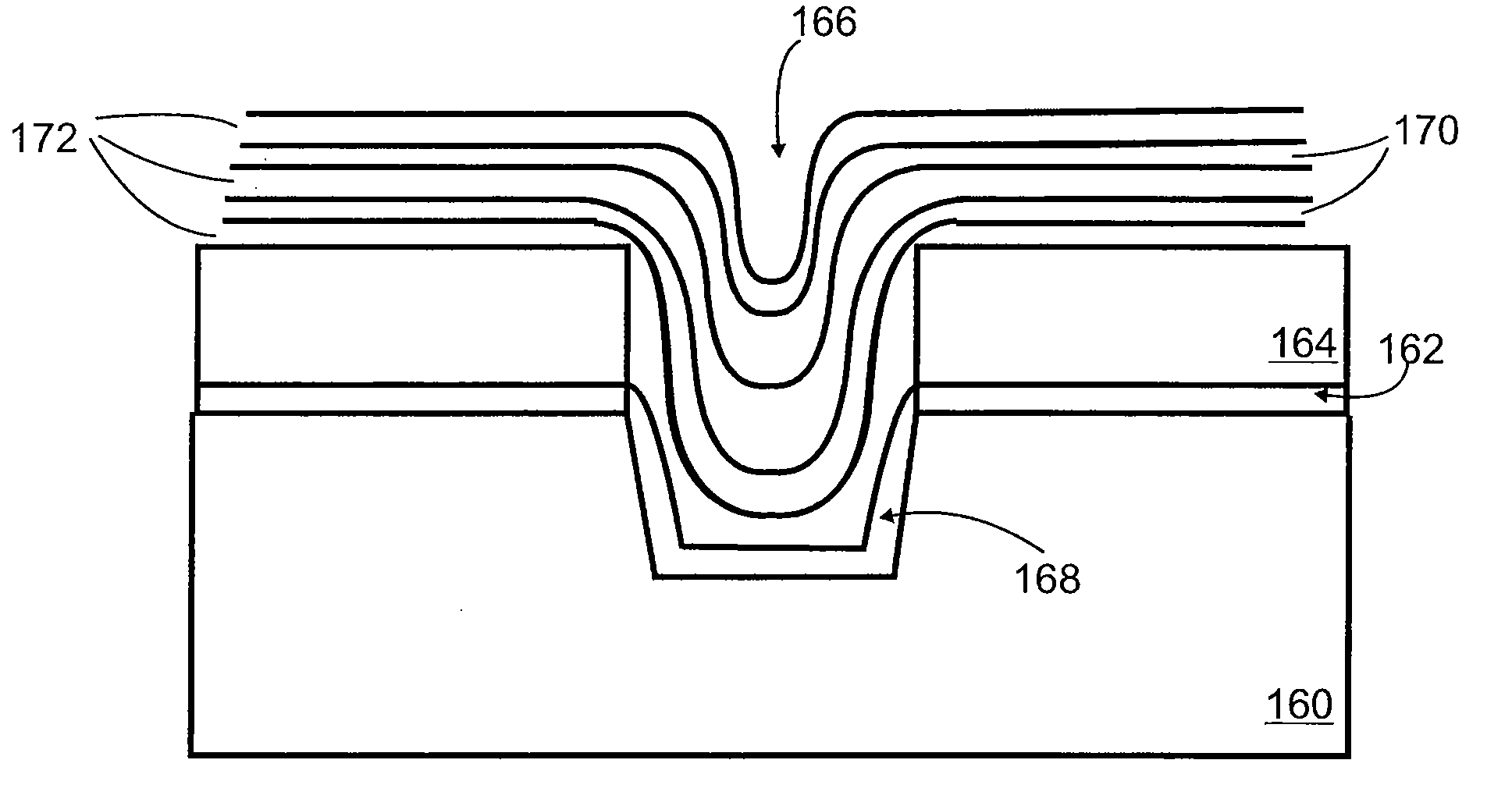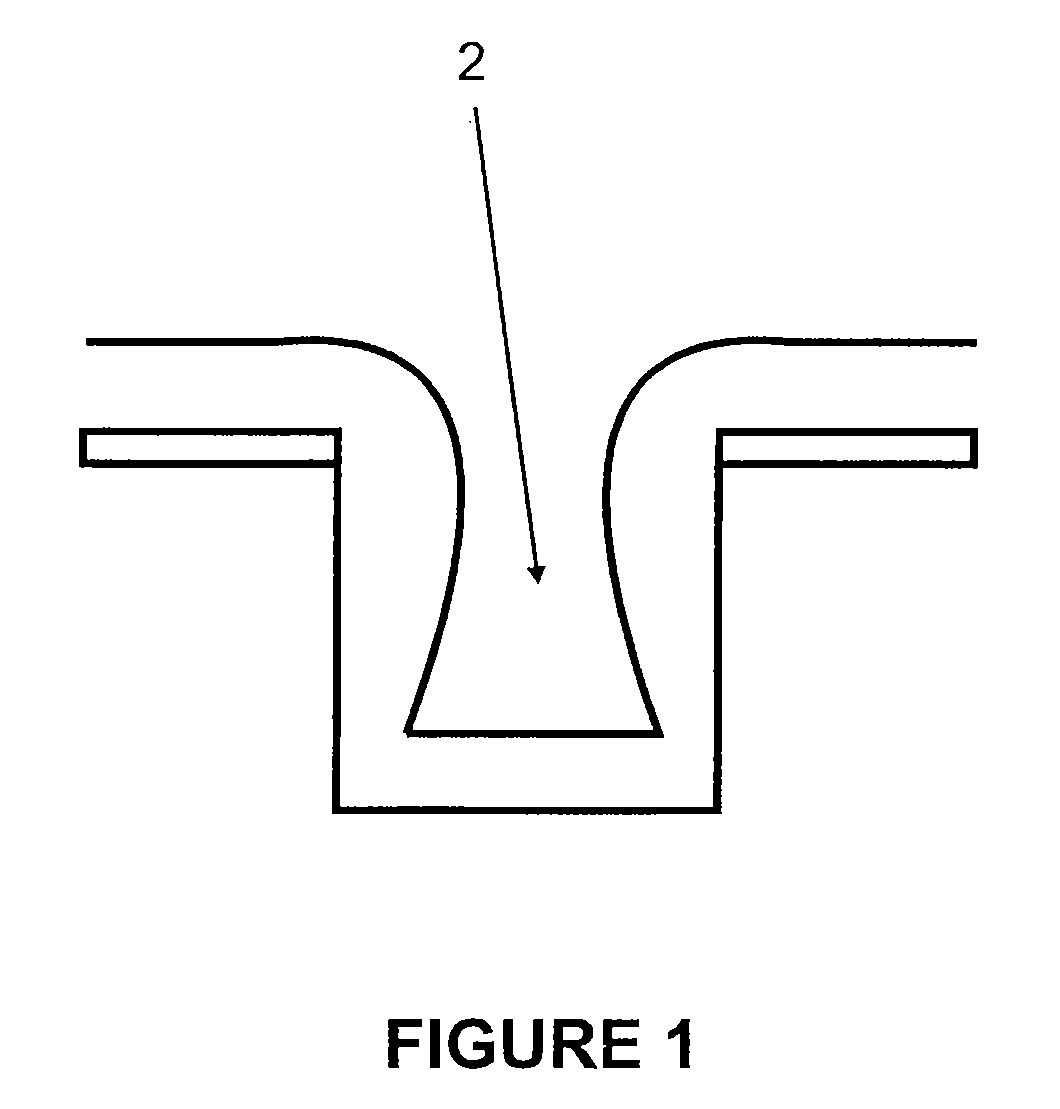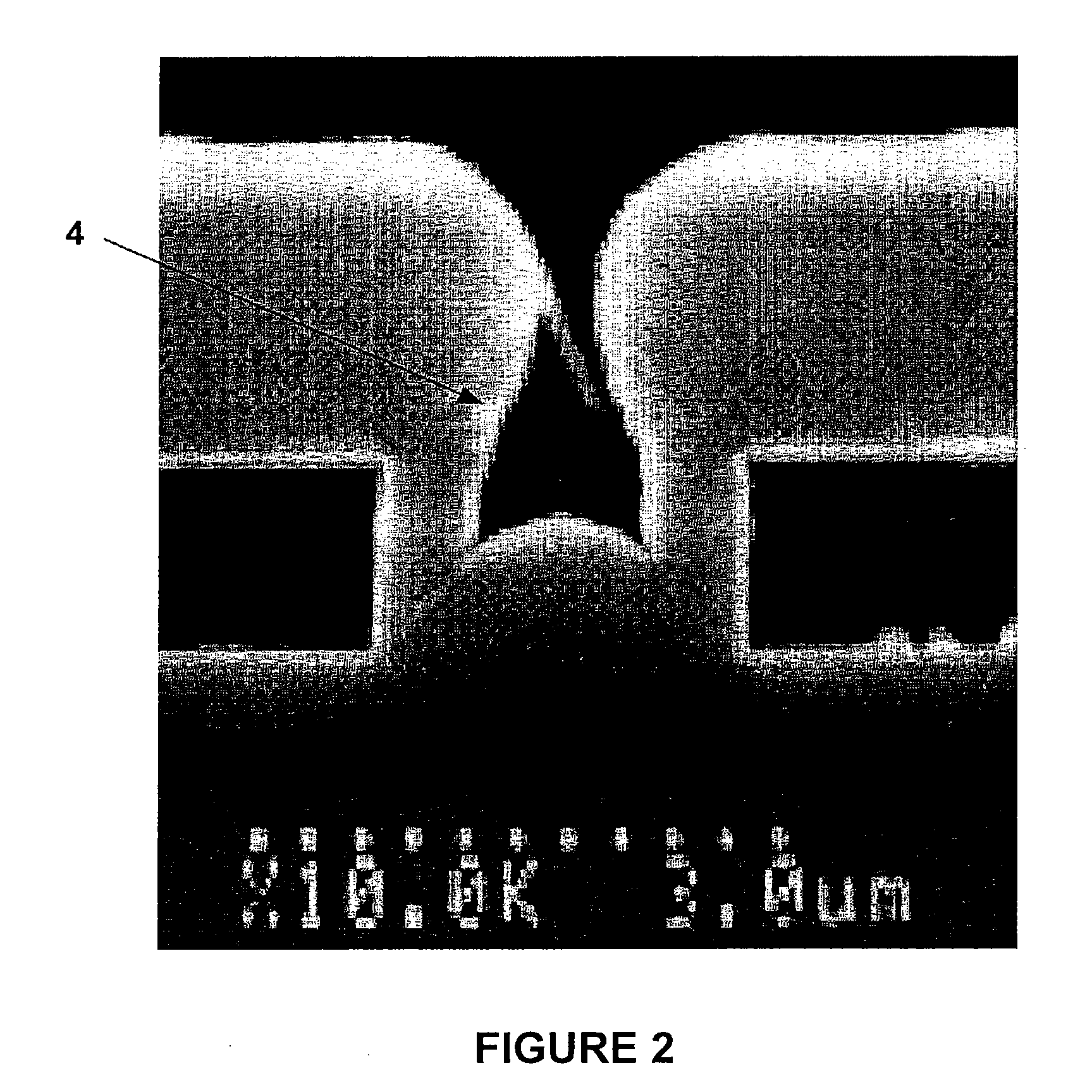Method of eliminating micro-trenches during spacer etch
a spacer etch and micro-trench technology, applied in the field of integrated circuits, can solve the problems of difficult process, difficult to reduce the size of the device, and the cost of the semiconductor fabrication facility can cost hundreds of millions or even billions of dollars, and achieve the effect of reducing voiding, effective gap filling process, and convenient us
- Summary
- Abstract
- Description
- Claims
- Application Information
AI Technical Summary
Benefits of technology
Problems solved by technology
Method used
Image
Examples
Embodiment Construction
[0025]The present invention is directed to integrated circuits and their processing for the manufacture of semiconductor devices. More particularly, the invention provides a method of semiconductor device formation with reduced void formation and a resulting structure. Merely by way of example, the invention has been applied to the formation of shallow trench isolation (STI) regions. But it would be recognized that the invention has a much broader range of applicability.
[0026]FIG. 1 is a simplified drawing showing void formation in a conventional trench filling process and FIG. 2 is a SEM image of void formation in a conventional STI process. A deposition process is used to fill the high aspect ratio trenches formed within the substrate. For example, a high aspect ratio trench is a trench where the ratio of the trench depth to the trench width is greater than 5:1. A trench with exemplary dimensions of a trench opening of 12 microns and a depth of 5000 Å can incur a number of problem...
PUM
 Login to View More
Login to View More Abstract
Description
Claims
Application Information
 Login to View More
Login to View More - R&D
- Intellectual Property
- Life Sciences
- Materials
- Tech Scout
- Unparalleled Data Quality
- Higher Quality Content
- 60% Fewer Hallucinations
Browse by: Latest US Patents, China's latest patents, Technical Efficacy Thesaurus, Application Domain, Technology Topic, Popular Technical Reports.
© 2025 PatSnap. All rights reserved.Legal|Privacy policy|Modern Slavery Act Transparency Statement|Sitemap|About US| Contact US: help@patsnap.com



